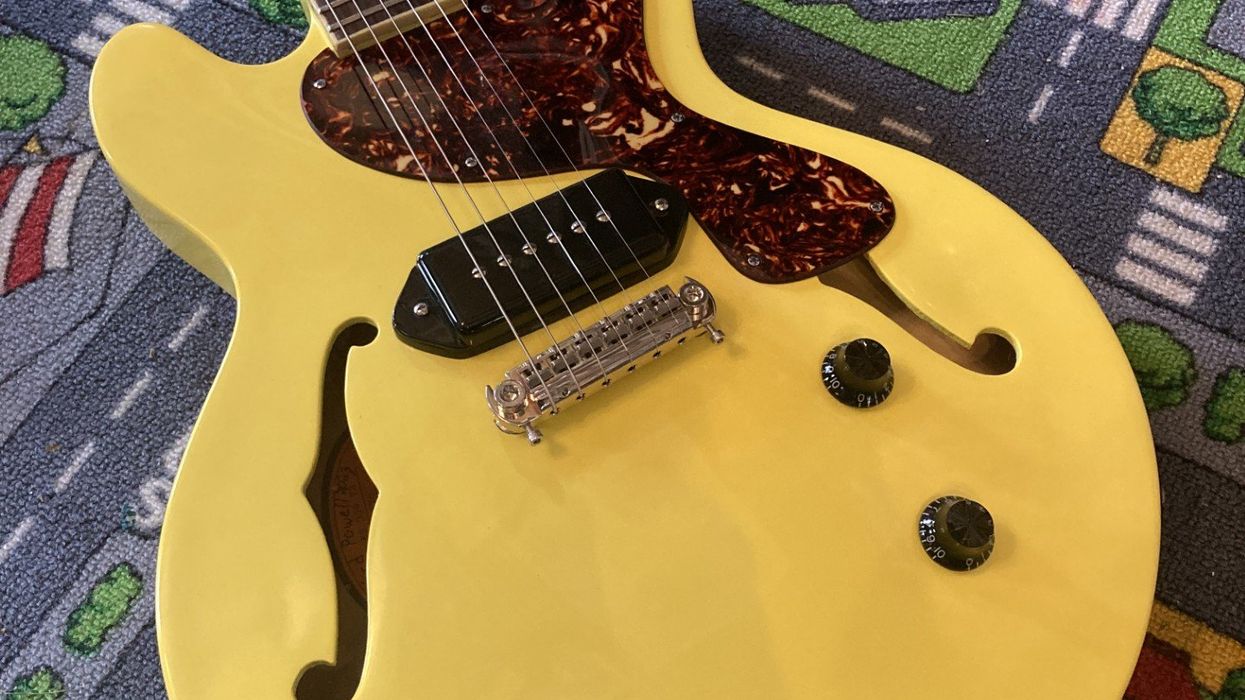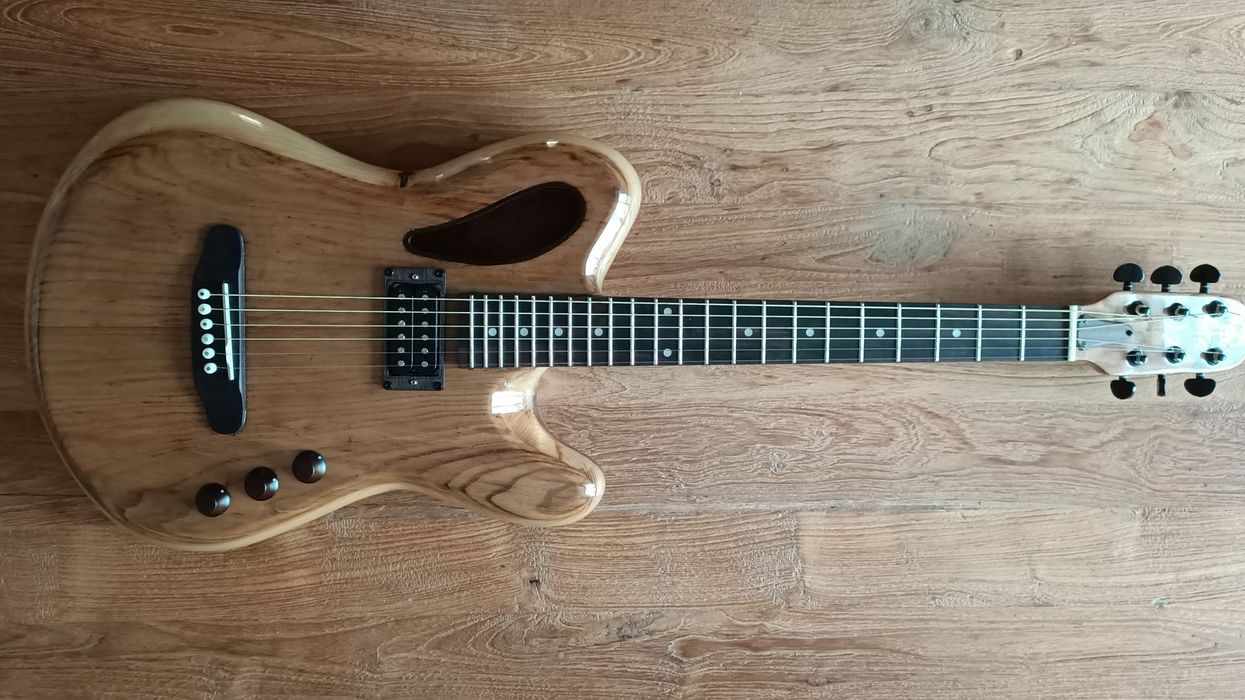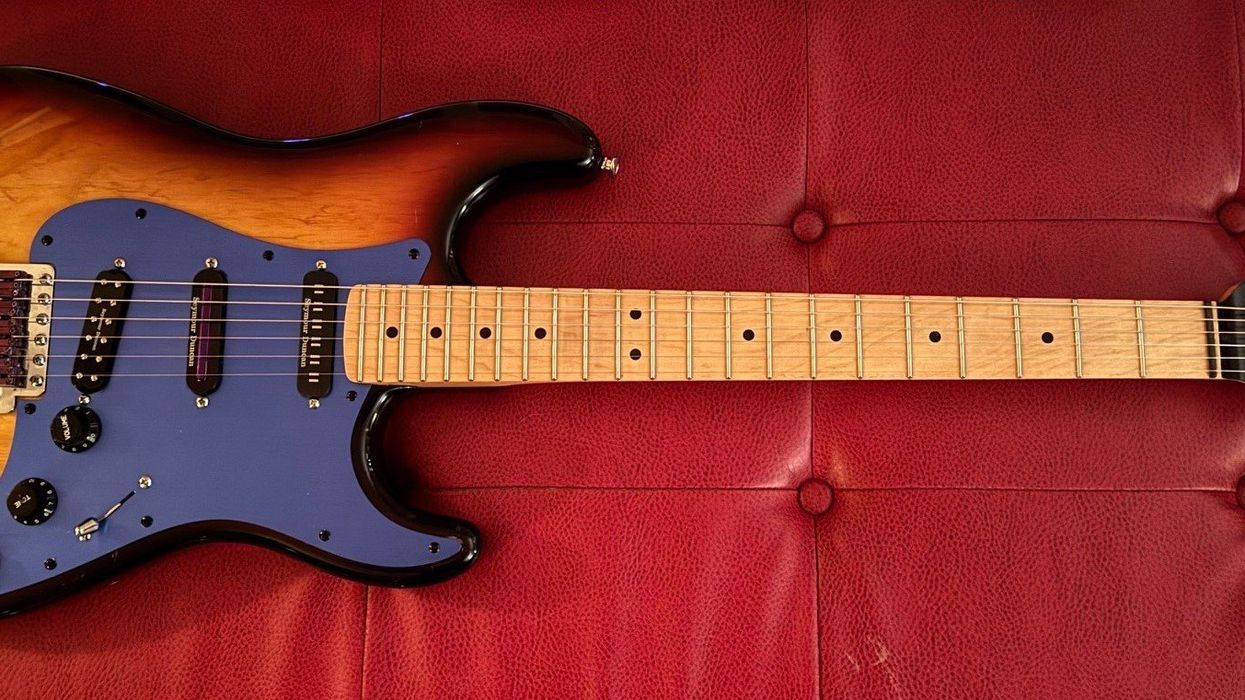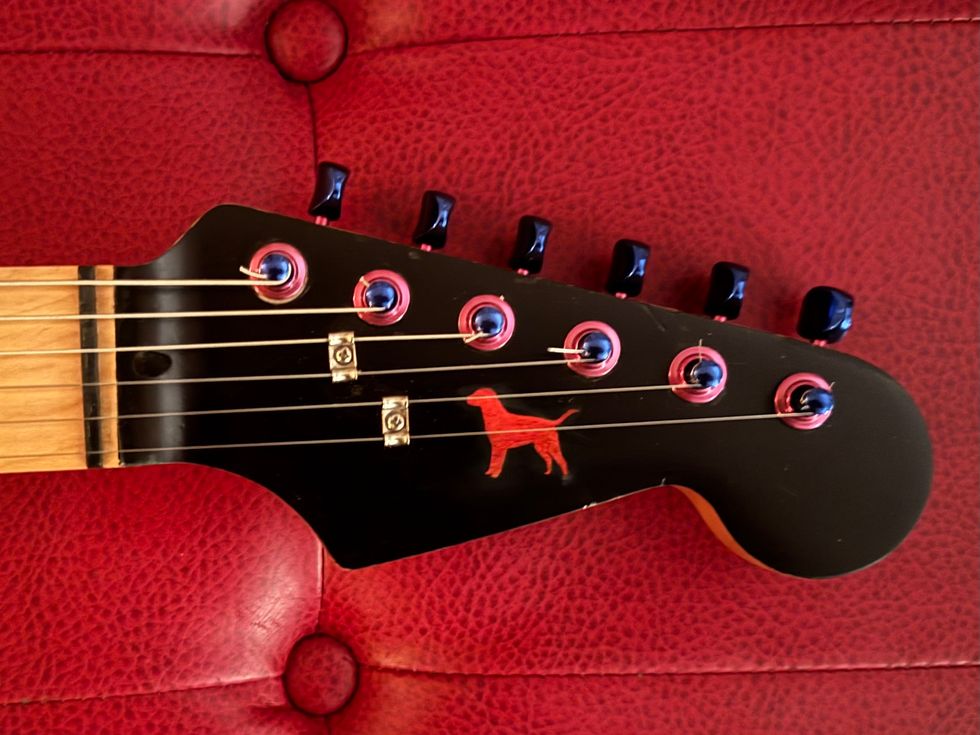Taking a Squier Affinity Stratocaster and Mini Precision Bass, one reader created a super-versatile instrument for looping that he can pick, pluck, tap, and slap.
I've been using a multitrack looper with a guitar and an octave pedal, which was okay for simple bass parts, but didn’t give me thick strings and I couldn’t slap with it. So I decided to build a double-neck prototype specifically for looping, with a 6-string guitar and a 4-string bass.
Since building the necks would be the hardest part, I looked around for instruments with bolt-on necks I could reuse. Squier makes an Affinity Stratocaster and a Mini Precision Bass which were affordable and had matching fretboards, so I bought those. It was also cheaper to reuse the electronics and hardware that came with them, rather than buying everything separately.
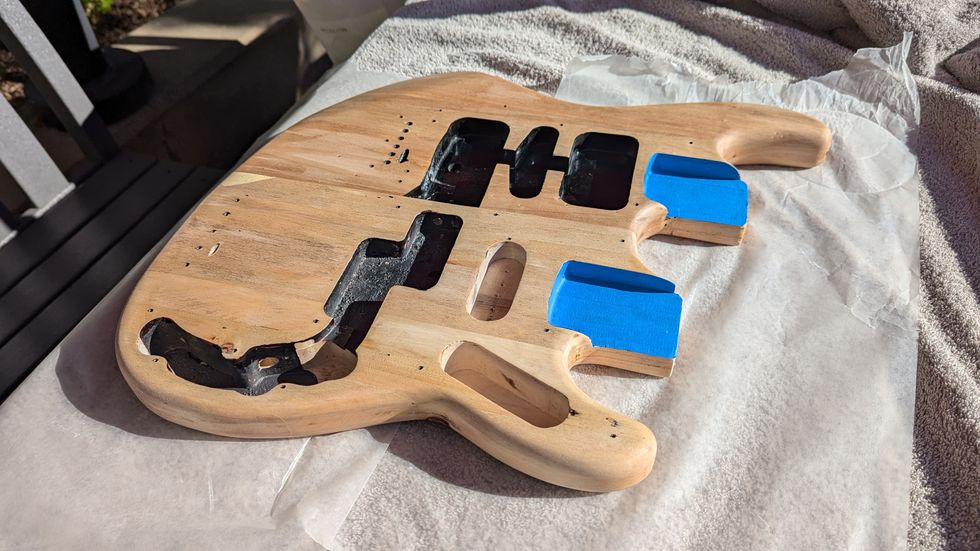
Using two precut instrument bodies saved the burden of having to route cavities for the electronics.
My plan was to design my own body from scratch. As I debated which neck should go on top, how far apart they should be, and whether to line up the nuts or the saddles, I realized there was actually enough wood there to make a double neck body, which saved me the work of recreating the neck pockets, etc. Putting the guitar on top made barre chords much more comfortable, and the 28.6" bass scale meant I could still reach the first fret easily.
After stripping the paint with a heat gun, I ran both bodies through a table saw, glued them together, and thinned them to 1 3/8". Then I created an offset body shape, a new arm bevel, and reshaped the three cutaways. The pickguards are both original, with the guitar side cut down to make a yin and yang shape. The controls are volume and tone for each neck, using the original knobs. I moved the jack to the back and upgraded it to stereo so the guitar and bass signals can run through separate effects chains.
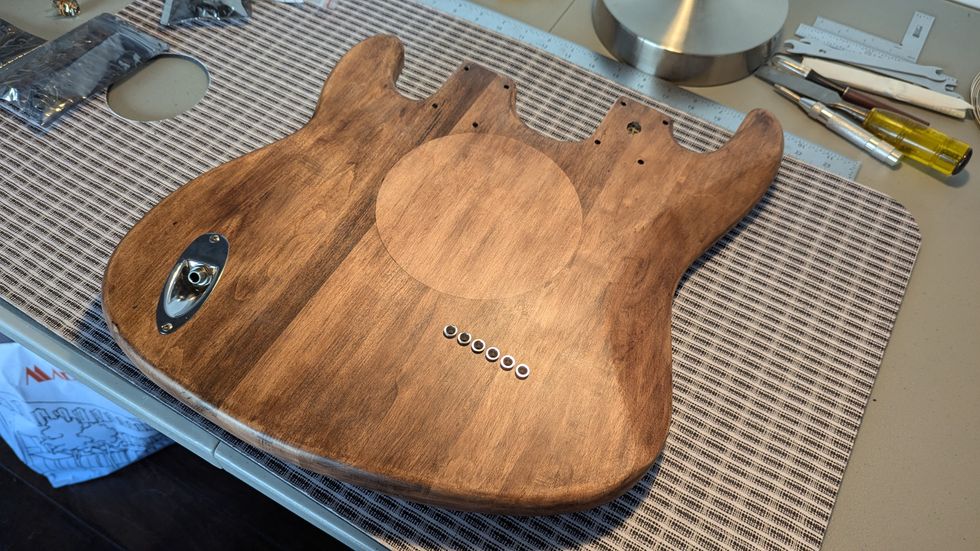
Note the location of the jack on the back of the extended-shape body. It’s unconventional but practical.
My top concerns were weight and ergonomics. Many doublenecks are around 12 to 13 pounds and 18" wide. I knew I would never play something that big, no matter how good it sounded. To that end, I saved weight everywhere and tracked everything to the gram in a spreadsheet. (That’s also the reason I chose a fixed bridge instead of a vibrato.) I ultimately used a wipe-on gel stain to keep the weight down further. Stripping the paint from the factory saved 5 ounces! The final playable weight is 9 pounds, 5 ounces, and 15 1/4" wide at the lower bout. This has been pretty manageable, however, there is some neck dive because of the tuners. I’m taking everything I’ve learned from this prototype and designing a new doubleneck, which will be headless. I believe I can shed another pound and eliminate the neck dive that way. You can watch my entire build on YouTube.


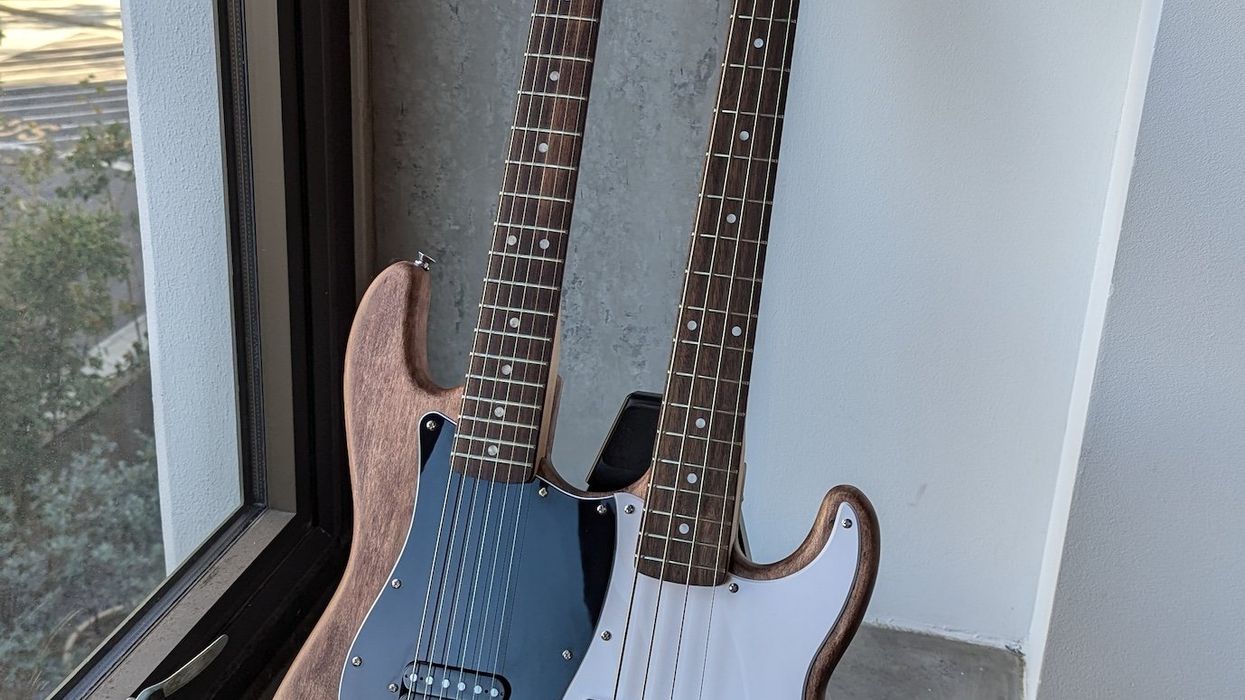


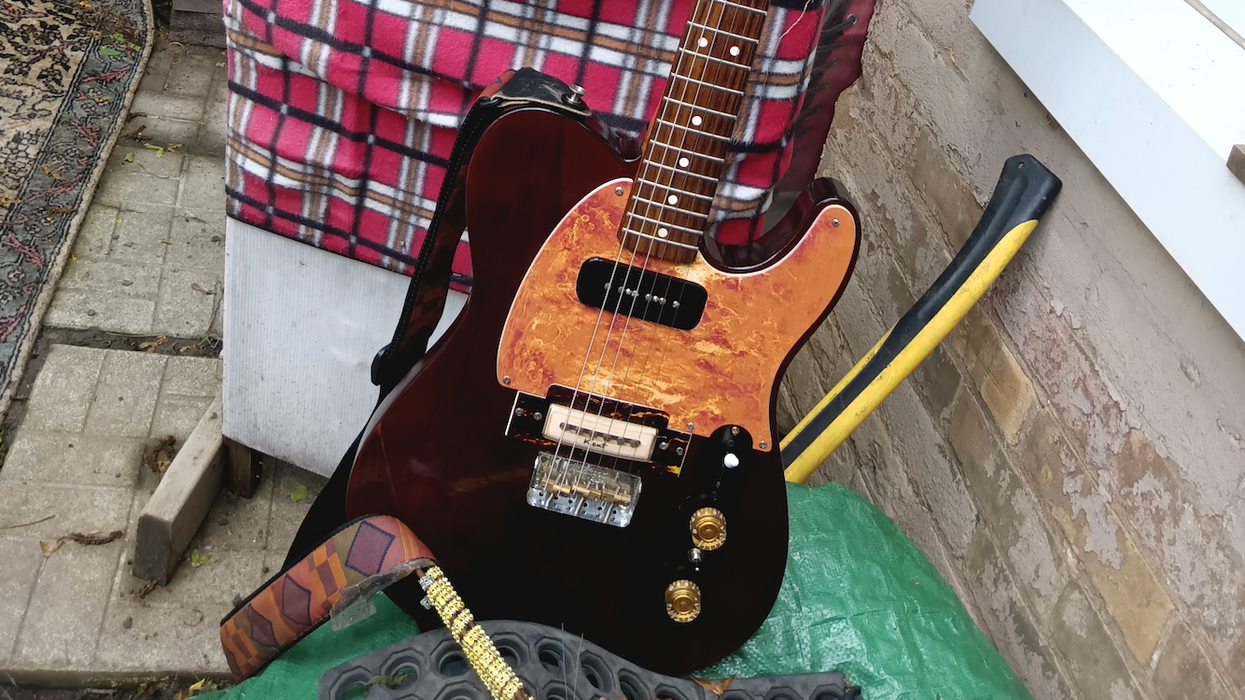

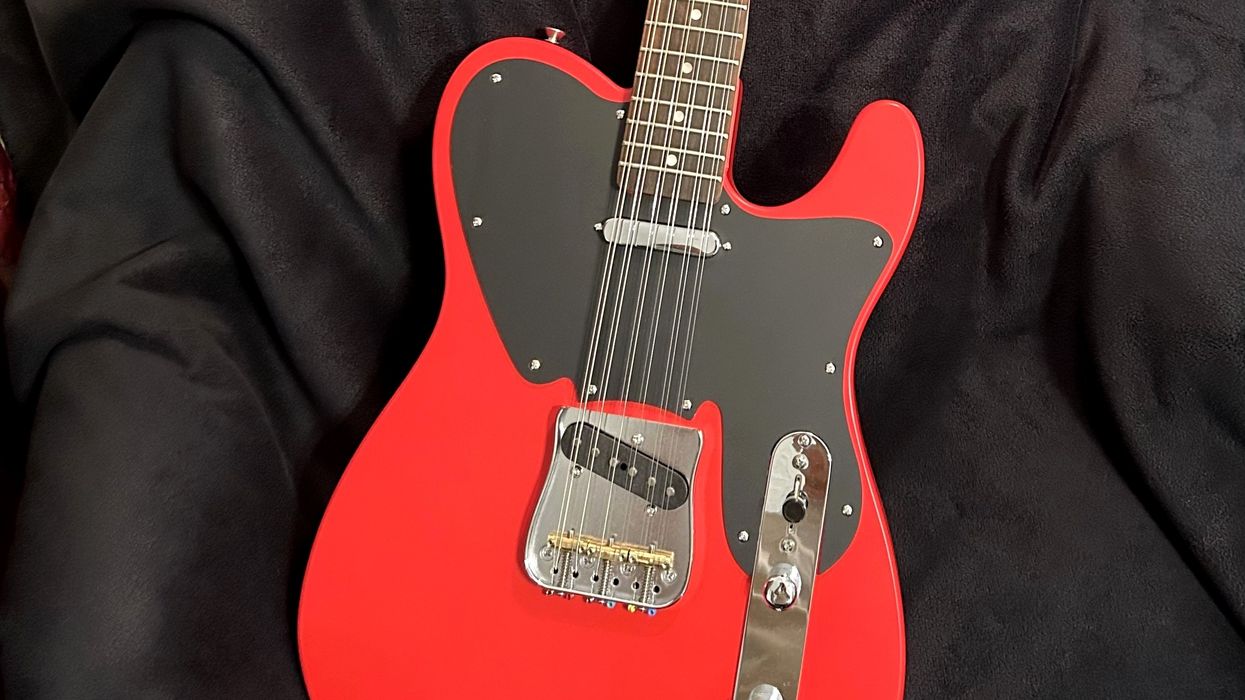
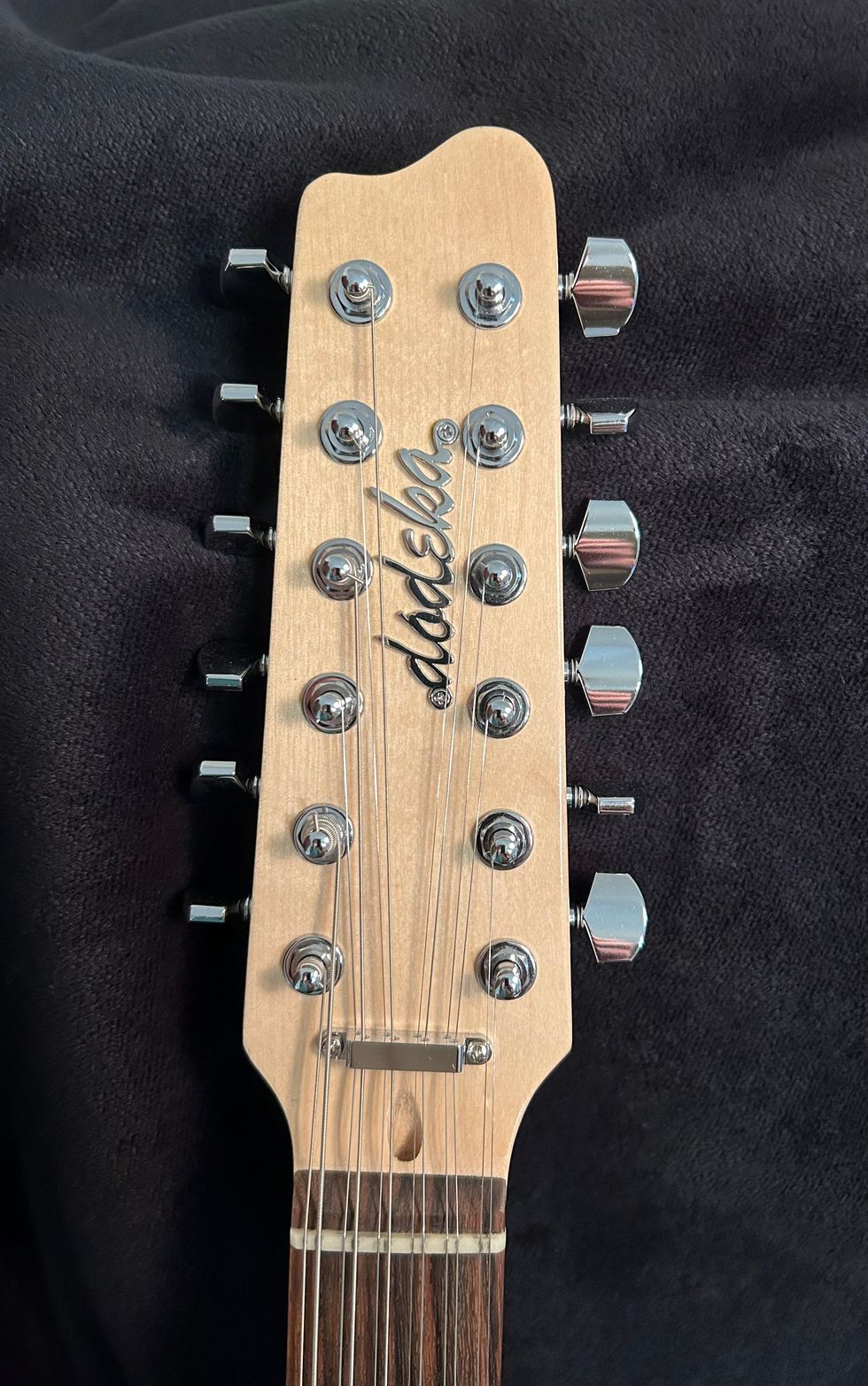



![Rig Rundown: Russian Circles’ Mike Sullivan [2025]](https://www.premierguitar.com/media-library/youtube.jpg?id=62303631&width=1245&height=700&quality=70&coordinates=0%2C0%2C0%2C0)




